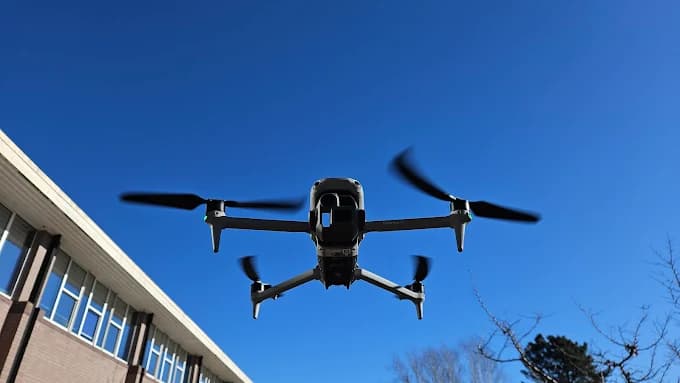
The truth is, a drone roof inspection delivers a comprehensive visual dossier on your roof's health, something I've seen firsthand on countless certified flights.
I'm talking about 4K-resolution images that can pinpoint hairline cracks in a single tile from 50 feet up, and thermal scans that reveal subtle temperature shifts around vents and skylights—the tell-tale signs of hidden moisture long before it causes a visible leak.
Whether you're trying to document storm damage for an insurance claim or just wanting to understand the condition of an aging roof, this guide will walk you through what professionals look for, so you can interpret the findings like an expert.
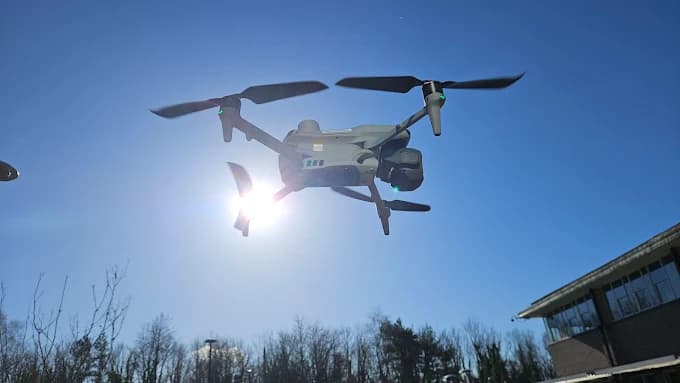
30 Second Summary
- High-resolution 4K images reveal minute details like hairline cracks, loose shingles, and early signs of water damage.
- Close-up photos document specific defects invisible from ground level, such as broken tiles and deteriorating flashing.
- Comprehensive aerial perspectives capture the entire roof layout, including slopes, valleys, ridges, and material transitions.
- Thermal/infrared imaging detects hidden moisture issues and temperature variations indicating water intrusion beneath the surface.
- Annotated visuals highlight problem areas with reports documenting findings and recommended repairs with precise location references.
Drone inspections deliver high-resolution imagery of roof conditions
The vast majority of commercial drones now come equipped with 4K cameras that capture incredibly detailed images of roof surfaces. These high-resolution photos reveal minute details including hairline cracks, loose shingles, and early signs of water damage that might be invisible from ground level.
You'll receive images showing your entire roof from multiple angles, with clarity that allows for precise measurement and assessment. Drone operators can hover just feet above problem areas to document specific concerns.
The resulting imagery provides clear evidence of roof conditions for insurance claims, contractor estimates, and maintenance planning. Unlike traditional inspections, drone imagery lets you see exactly what the inspector sees.
You can review the photos yourself, share them digitally with contractors, and maintain a visual record of your roof's condition over time.
I always encourage my clients to spend a few minutes looking through the raw photos themselves. You'll get a much better feel for your roof's condition than just looking at a summary report, and you might even spot something that you want to ask me about specifically.
Close-up drone photos highlight cracks, leaks, and other roof defects
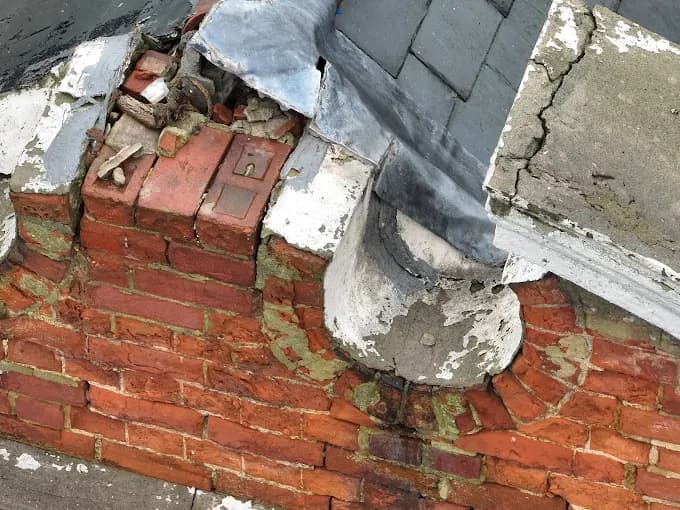
Identifying Structural Weaknesses
When drone operators position their drone strategically over your roof, they can capture detailed close-up photos that reveal defects invisible to the naked eye from ground level. These high-resolution images highlight hairline cracks in shingles, broken tiles, and deteriorating flashing around chimneys and vents.
It's often the small details around vents and chimneys where the first signs of trouble appear. From the ground, these areas are almost impossible to see clearly, but with the drone, I can get a perspective that's even better than being on the roof itself.
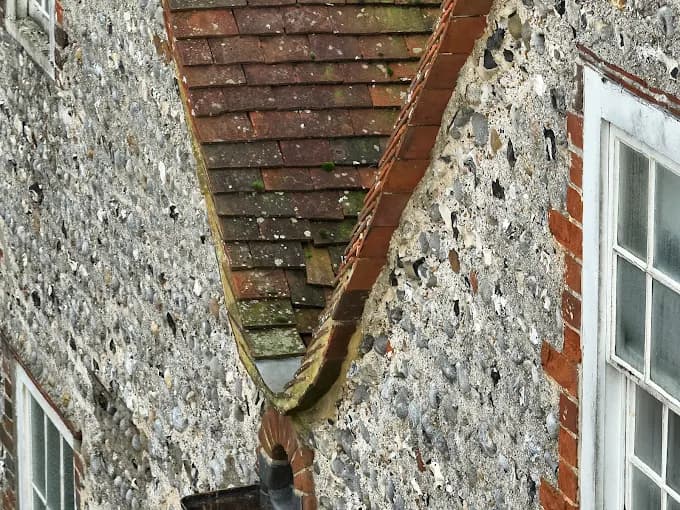
Spotting Moisture and Growth
You'll receive clear visual evidence of water pooling areas, which often indicate drainage problems and potential leakage points. The drone's camera can detect discoloration patterns suggesting moisture intrusion beneath the surface, along with moss or algae growth that accelerates roof deterioration.
A little bit of moss or algae might not seem like a big deal, but I've seen firsthand how it can shorten a roof's lifespan. It acts like a sponge, holding moisture against the shingles, which can lead to rapid deterioration, especially during freeze-thaw cycles.
These close-up photos also document missing fasteners, lifted shingles, and separation at seams—early warning signs of problems that could worsen without intervention. With this visual documentation, you'll understand exactly what repairs are needed and can make informed decisions about maintenance priorities.
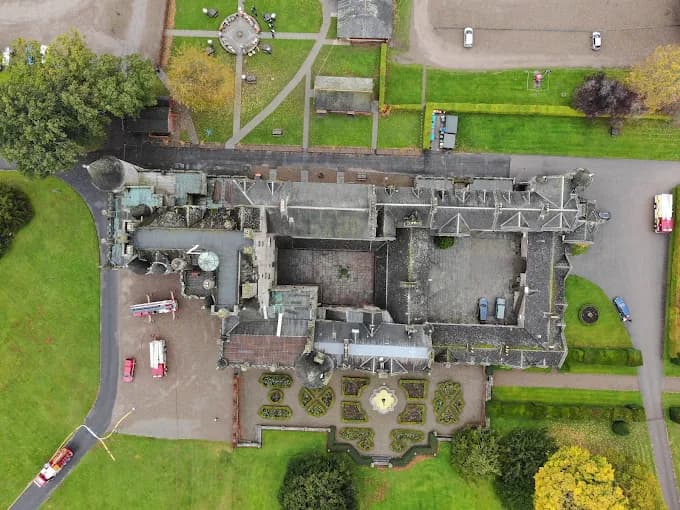
Aerial perspectives provide comprehensive coverage of entire rooftops
Unlike close-up shots that focus on specific defects, aerial perspectives from drones offer a bird's-eye view that captures your entire roof system in one sweep. These comprehensive images reveal the complete layout of your roof, including all slopes, valleys, ridges, and transitions between different roofing materials.
For me, these wide shots are crucial. A single cracked tile might seem minor, but when I see it in the context of a whole valley with poor drainage and debris buildup, it tells me a much more serious story. You can't get that full picture without the aerial view.
You'll see how architectural elements interact with one another and identify potential problem areas where water might pool or debris collects. Aerial footage helps visualize drainage patterns across the entire surface, highlighting inadequate water runoff before it causes structural damage.
These wide-angle perspectives also document the condition of chimneys, vents, skylights, and HVAC units in relation to surrounding roofing materials. With full-roof documentation, you'll receive a more accurate assessment of your roof's overall health and can prioritize repairs based on the complete picture.
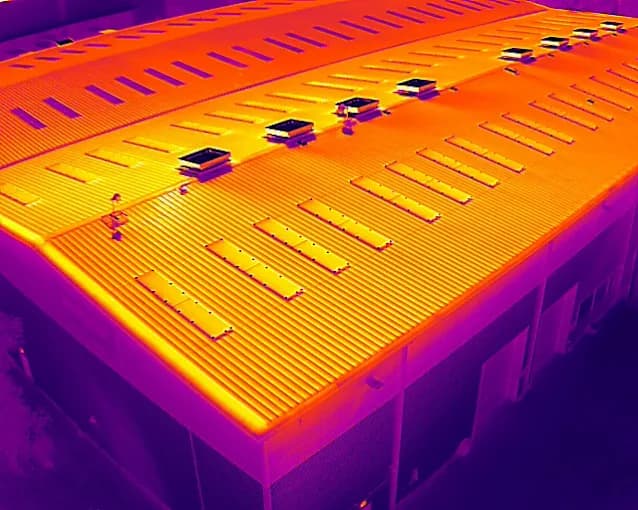
Thermal or infrared images can reveal hidden water damage
Powerful thermal imaging technology takes drone roof inspections to another level by detecting moisture issues invisible to the naked eye.
When water infiltrates your roof structure, it retains heat differently than dry materials, creating temperature variations that infrared cameras can identify with remarkable precision.
How Thermal Imaging Works
You'll receive color-coded thermal maps highlighting potential problem areas where trapped moisture lurks beneath the surface. Cool blue spots often indicate water intrusion, while surrounding dry areas appear warmer in red or yellow hues.
This technology helps you catch leaks before they cause extensive structural damage, mold growth, or insulation degradation.
I remember one inspection on a roof that looked perfect to the naked eye. But when I switched to the thermal camera, a large, cool blue area showed up. We discovered a slow leak that had been saturating the insulation for months, completely invisible from the outside. The client was able to fix it before it caused major structural damage.
With thermal imaging, you're no longer limited to finding problems after water stains appear on your ceiling. Instead, you'll identify and address developing issues early, potentially saving thousands in future repair costs.
Type of Damage | Detection Method | Risk if Unaddressed |
|---|---|---|
Hidden Moisture | Thermal Imaging | Mold growth, leaks, structural damage |
Cracked Shingles | High-Resolution Photos | Water ingress, further deterioration |
Poor Drainage | Aerial Perspective | Pooling water, leaks, material decay |

Inspection images are supplied as raw files, reports, or annotated visuals.
Understanding Your Image Files
After your drone inspection is complete, you'll receive the documented findings in several possible formats to suit your specific needs. Most inspection companies provide raw image files that give you unaltered, high-resolution photos and videos for your records or further analysis.
Making Sense of Annotated Reports
You may also receive comprehensive reports with annotated visuals that highlight problem areas. These annotations typically use color-coding, arrows, or circles to pinpoint damage locations, making it easy to understand what requires attention. Many contractors add detailed notes explaining the severity of issues and recommended repairs.
When you get your report, make sure the annotations are clear. I always try to include both a close-up of the issue and a wider shot showing where it is on the roof. It's no use knowing you have a loose shingle if you can't tell a contractor exactly where to find it.
Some services offer interactive digital formats where you can zoom in on specific areas or toggle between visual and thermal images. For insurance claims or contractor estimates, you'll often receive professionally formatted PDF reports that document all findings with precise location references.
Deliverable Type | Description | Best Use Case |
|---|---|---|
Raw Files | Unaltered high-resolution photos and videos. | Personal records or getting multiple quotes. |
Annotated Visuals | Images with highlighted problem areas. | Understanding specific issues quickly. |
Full Report | Comprehensive document with findings and recommendations. | Insurance claims, contractor estimates. |
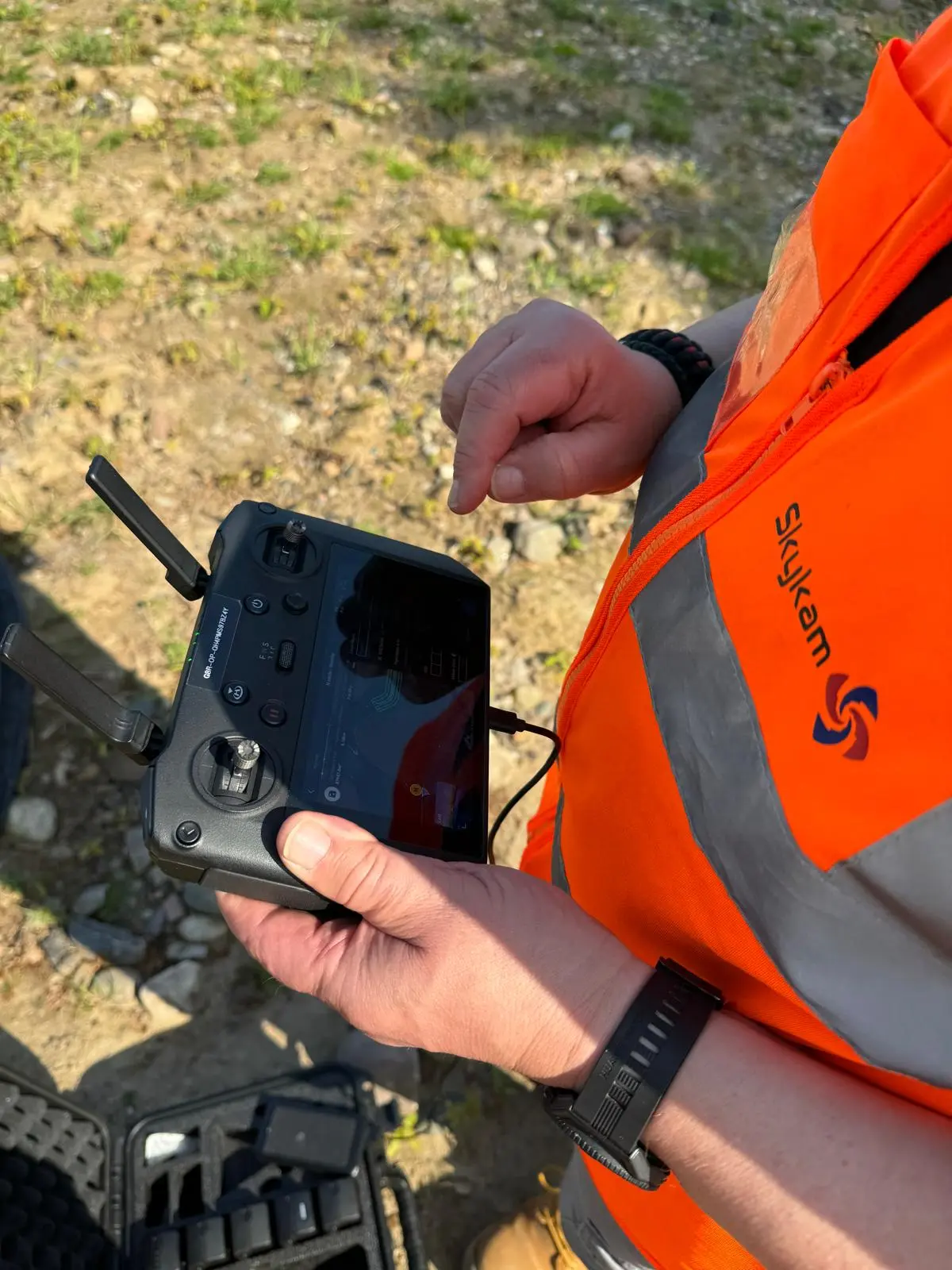
What a Drone Inspection Might Miss
While incredibly effective, drone inspections have limitations. Drones cannot see through solid surfaces, so they won't detect damage to the underlying roof deck or rafters unless it has caused a visible surface-level issue or a significant temperature difference.
Similarly, an inspection can't confirm an active leak without ongoing rain, and it does not cover the interior attic space where the first signs of water entry are often visible.
For a complete assessment, a drone inspection is best paired with a traditional interior check.
That's why I always tell my clients that a drone inspection is a powerful part of the puzzle, but not the whole solution. It gives us an unparalleled view of the exterior, which should always be followed up with a quick look inside the attic if there are any concerns.
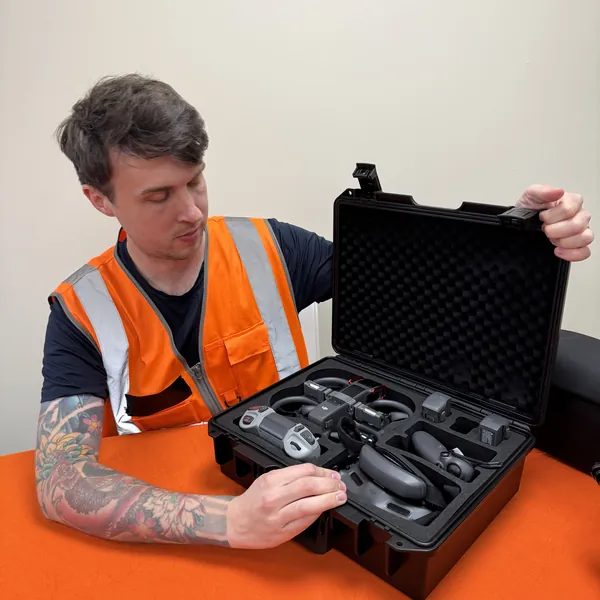
Frequently Asked Questions
How Much Does a Typical Drone Roof Inspection Cost?
A typical drone roof inspection costs between £150 and £400, depending on your roof size, location, and complexity. You'll pay less for standard residential inspections and more for larger commercial properties. Some companies charge flat rates while others bill per square foot. Additional services like thermal imaging or detailed reports might increase your price. Many insurance companies will reimburse these costs if damage is detected.
What Weather Conditions Prevent Effective Drone Roof Inspections?
You shouldn't fly drones in high winds (typically above 15-20 mph), rain, snow, or fog as these conditions impair visibility and control. Lightning storms pose electrical hazards, while extreme temperatures can affect battery performance. Heavy precipitation obscures roof details and damages equipment. Even moderate winds can destabilize smaller drones, compromising image quality. Schedule your inspection during clear, calm days for the most accurate assessment of your roof.
Do I Need Permits to Have a Drone Inspect My Roof?
You might need permits for drone roof inspections depending on your location. Most residential inspections don't require special permits if the drone operator has the proper CAA permissions (such as an A2 CofC or GVC). However, local regulations vary—some neighbourhoods, HOAs, or municipalities have drone restrictions. If you're near airports, military facilities, or in restricted airspace, additional authorizations are necessary. It's best to hire a licensed drone inspector who understands these requirements.
How Long Does a Standard Drone Roof Inspection Take?
A standard drone roof inspection typically takes 20-30 minutes to complete. This timeframe includes the drone setup, flight time around your property, and capturing all necessary footage. Factors like your roof's size, complexity, and weather conditions may extend this duration. You'll usually receive your inspection results within 24-48 hours as the footage needs to be analyzed and compiled into a comprehensive report.
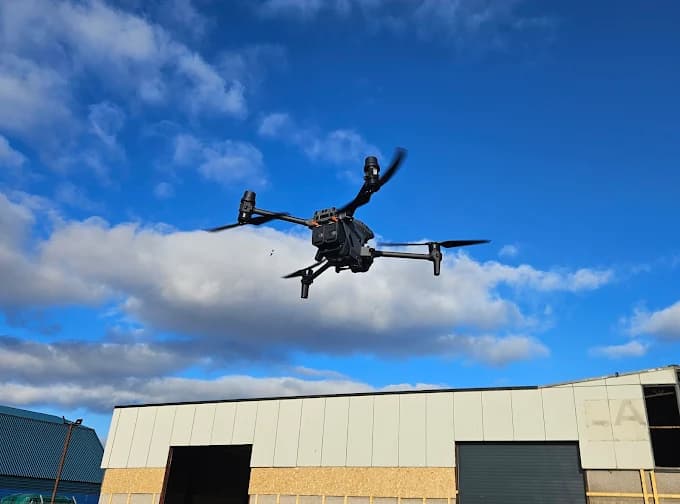
Can Drones Detect Mold Growth on Roofing Materials?
Yes, drones can detect mold growth on your roof. They capture high-resolution images that reveal discoloration, dark patches, and unusual growth patterns indicative of mold. Advanced drones equipped with thermal cameras can also identify moisture retention areas where mold thrives. You'll receive detailed visuals showing the extent of contamination, helping you determine if immediate treatment is needed before structural damage occurs.
Ready for a Clear View of Your Roof's Health?
As we've seen, a drone roof inspection provides a powerful combination of high-resolution close-ups, comprehensive aerial views, and hidden-moisture detection through thermal imaging. But getting this level of detail requires a certified professional with experience in property surveys and thermography.
That’s where HireDronePilot simplifies the process. As the UK's premier managed marketplace, we specialize in connecting businesses with verified professional drone pilots for hire. We streamline drone services through competitive bidding, ensuring quality, compliance, and value for every aerial project across the United Kingdom.
Our network includes drone pilots with the specific GVC certifications and inspection experience needed to deliver the actionable insights you require.
To find a qualified local expert, visit us at https://hiredronepilot.uk/.
Don't wait for a small, unseen issue to become a major expense. Post your roof inspection project today and receive competitive quotes from drone pilots who can give you the clear, detailed view you need to protect your property.
About the Author

Written by
Peter Leslie
Peter Leslie is a CAA-approved commercial drone pilot with 10+ years experience and over 10,000 flight hours. He holds the GVC and A2 CofC drone licences with full CAA Operational Authorisation. Peter is a member of ARPAS-UK, the UK's non-profit trade association for the drone industry. He founded HireDronePilot to connect UK businesses with qualified, insured drone operators.
Looking for More Drone Work?
Join the UK's leading network of professional drone pilots and grow your business.
Open Access
Bid on any job - all jobs open to all pilots
Grow Revenue
Access high-value commercial projects
Stay Busy
Fill your schedule with regular work
Related Articles

Our Drone Survey Service In Stirling, Scotland
Bringing you Stirling drone survey data from areas no one else can fly.

How Much Does A Drone LiDAR Survey Cost
Forecasting your drone LiDAR survey cost requires understanding what's hidden beyond the initial quote.

Step By Step Process Of Drone LiDAR Survey
Next, discover the crucial post-flight steps that determine your survey's success.
